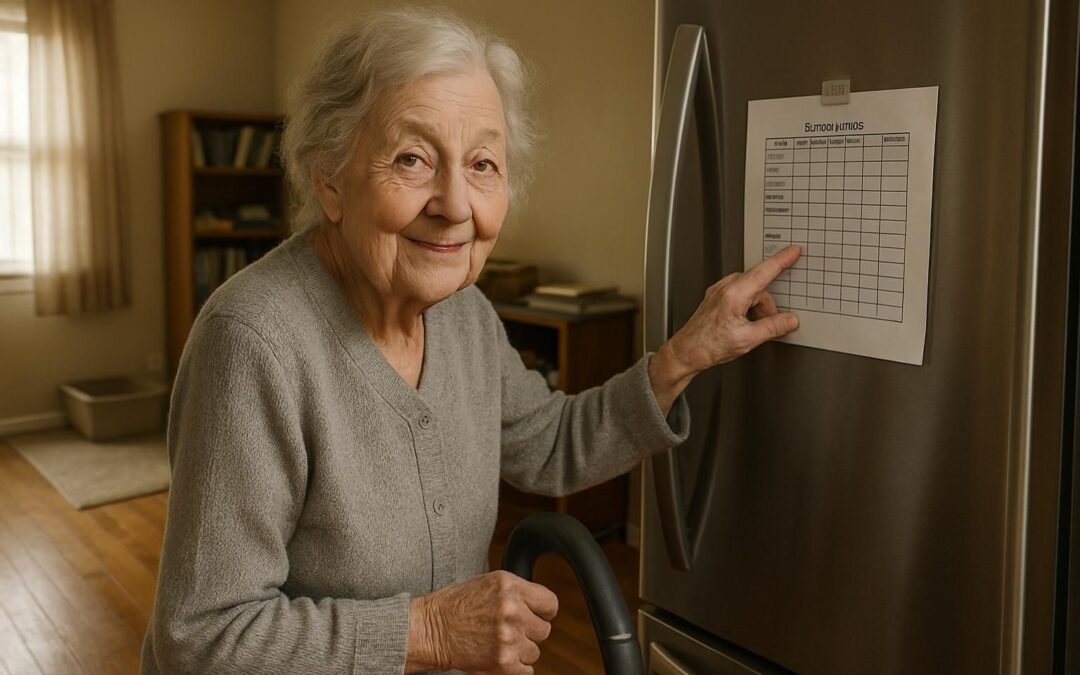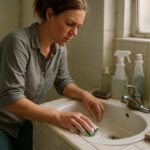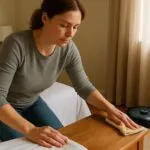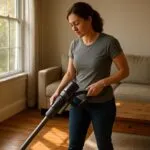Busy schedules, messy bedrooms, and overflowing laundry can make house cleaning feel overwhelming. Most homeowners know how it feels to stare helplessly at stacks of dirty dishes in the dishwasher or a bathroom cluttered with bathmats and shower curtains waiting for attention.
Yet regular housecleaning doesn’t have to be tiring or time-consuming. Studies show that having “Easy Steps To Cleaning,” like creating a clear schedule and picking up clutter first, can save people valuable hours every week.
This article shows simple ways anyone can clean quickly room by room, from dusting cabinets and kitchen countertops to vacuuming pet fur around the litter box; each step explained clearly so everyone can tackle their chores with ease.
Keep reading to finally achieve cleaner spaces without stress!
Key Takeaways
- Creating a clear, simple plan saves valuable time surveys show homeowners gain back several hours weekly by tackling cleaning step by step.
- Regular dusting with microfiber cloths traps dirt and allergens better, improving home air quality and family’s overall health; HEPA-filtered purifiers remove up to 99% of airborne particles.
- Sort clutter into “donate,” “trash,” or “keep” piles to make organization easier; the “one in, one out” rule helps control mess before it builds up again.
- Always match cleaners to surfaces carefully: glass cleaner prevents streaks on windows or mirrors, mild soap protects wood furniture from damage, while disinfectant sprays kill germs on countertops safely.
- Clean from top down dust ceilings first and floors last to avoid extra work; vacuum attachments like crevice tools reach hidden corners effectively while finishing floor care safely reduces slips and mold risks.
- An interactive cleaning checklist is available to help you plan and track your cleaning tasks efficiently.
The Importance of Cleaning
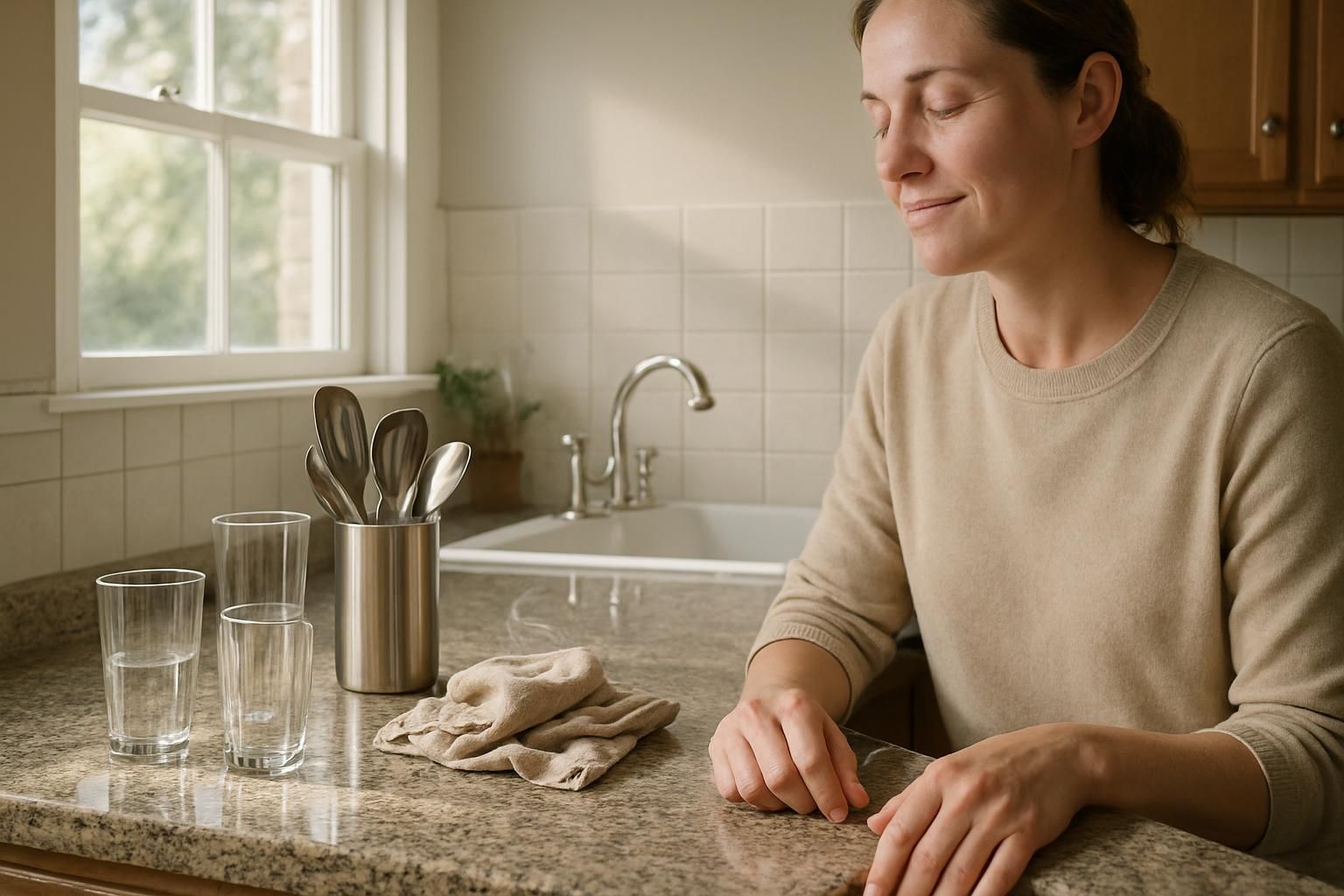
Keeping a clean home keeps germs at bay, making the kitchen sink and cutting boards safer for your family. It freshens the air indoors, so everyone breathes easier while tackling daily housework.
Maintaining hygiene
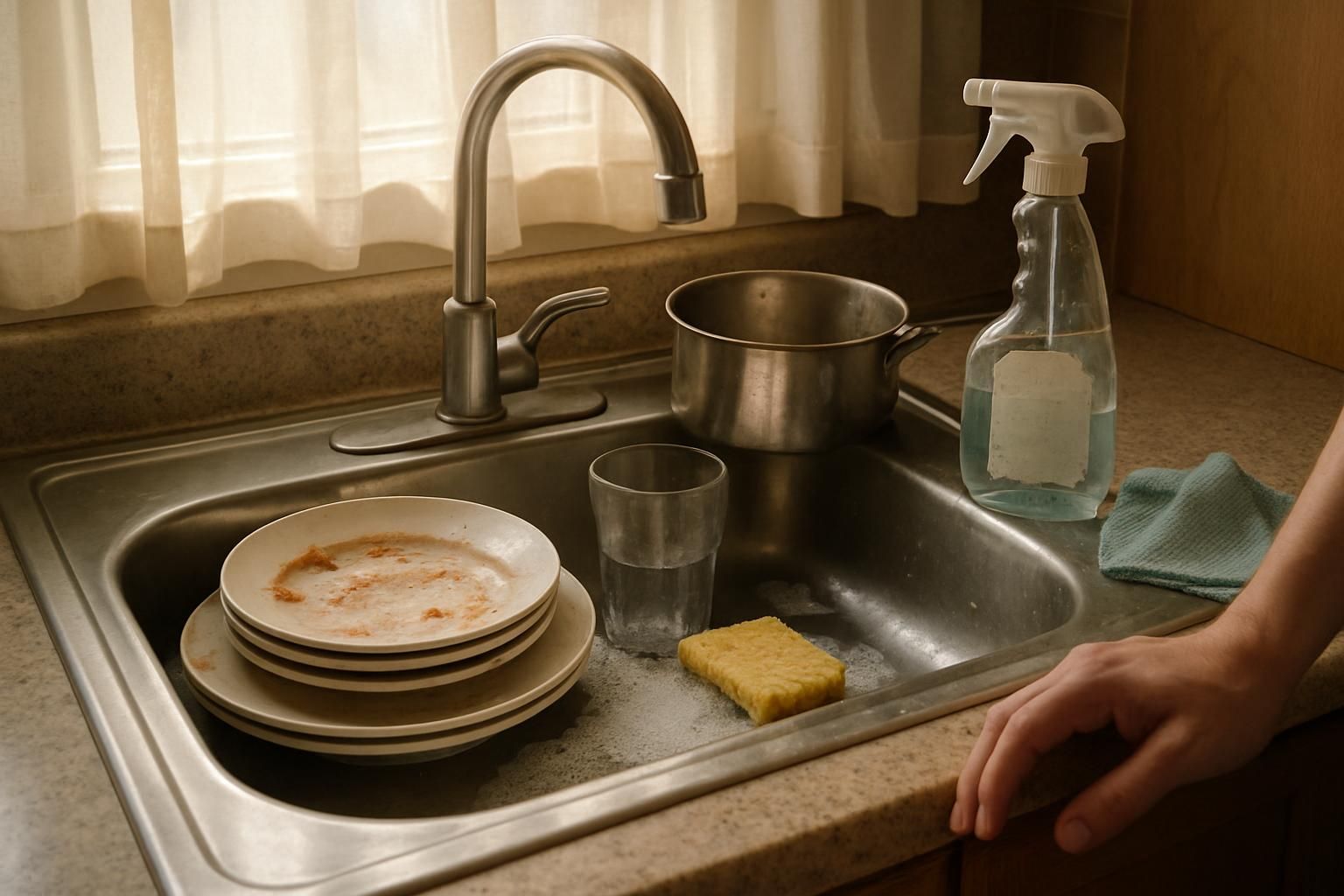
Maintaining hygiene removes germs that spread illness in the home. Simple housework like wiping down high-touch areas such as doorknobs, faucets, kitchen sinks, and cutting boards cuts down nasty viruses. Cleaning these spots daily with an all-purpose cleaner or disinfectant spray reduces sickness risk for adults and kids alike.
Using a microfiber cloth helps trap dust and dirt on surfaces more effectively than regular paper towels. After scrubbing counters, toilets, showers, or tubs thoroughly, wash hands often to avoid recontamination.
Disinfectants work best after dirt gets washed away first; soap and water eliminate grime while stronger solutions finish off most bacteria. With fewer germs around the house due to better hygiene habits practiced by parents regularly doing it themselves, family members stay healthier overall.
Cleaner spaces also lead smoothly into improving air quality indoors at home.
Improving air quality
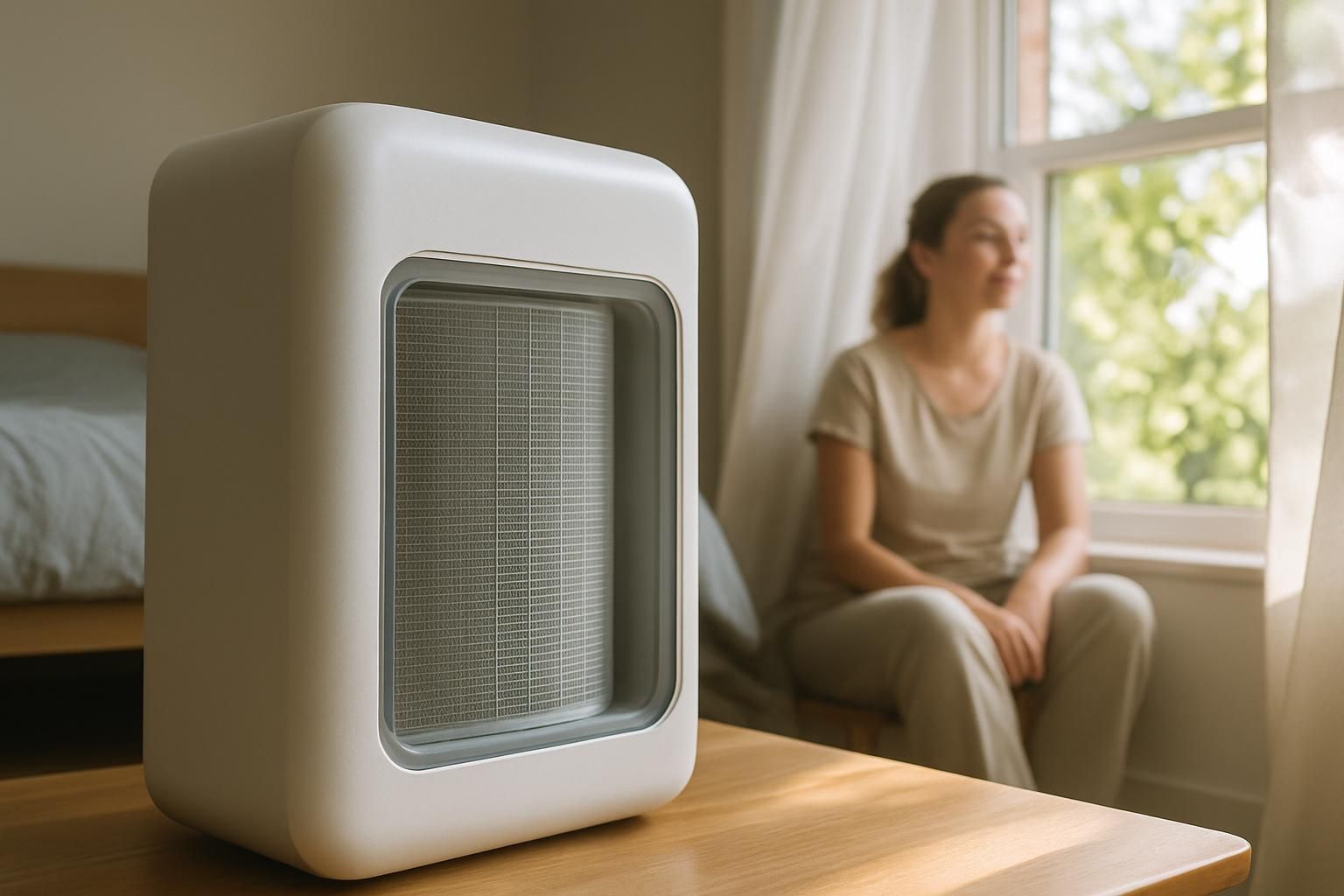
Clean air in the home affects family health directly. Indoor air pollution levels can sometimes rise higher than outdoor pollution, causing allergies and sickness, especially for kids. Investing in a high-quality HVAC system helps filter pollutants and improve indoor breathing conditions significantly.
Regular dusting with microfiber cloths keeps harmful particles away from furniture and linens. Folks should vacuum rugs, carpets, sofas, and curtains regularly to prevent allergens from settling.
Air purifiers with HEPA filters remove up to 99% of airborne particles like pet dander or pollen quickly and efficiently. Placing these purifiers near bedrooms or play areas cuts down allergy troubles sharply over time.
Checking vents often for dirt buildup prevents polluted airflow through rooms. Keeping windows clean using glass cleaner or a window squeegee allows fresh air circulation that boosts overall home comfort without extra fuss.
Make a Plan

A quick walk through your home helps spot dirty corners and messy rooms needing attention. Simple cleaning routines become easier with clear timetables and handy tools like your trusty washing machine or shower caddy stocked with supplies.
Identify areas to clean
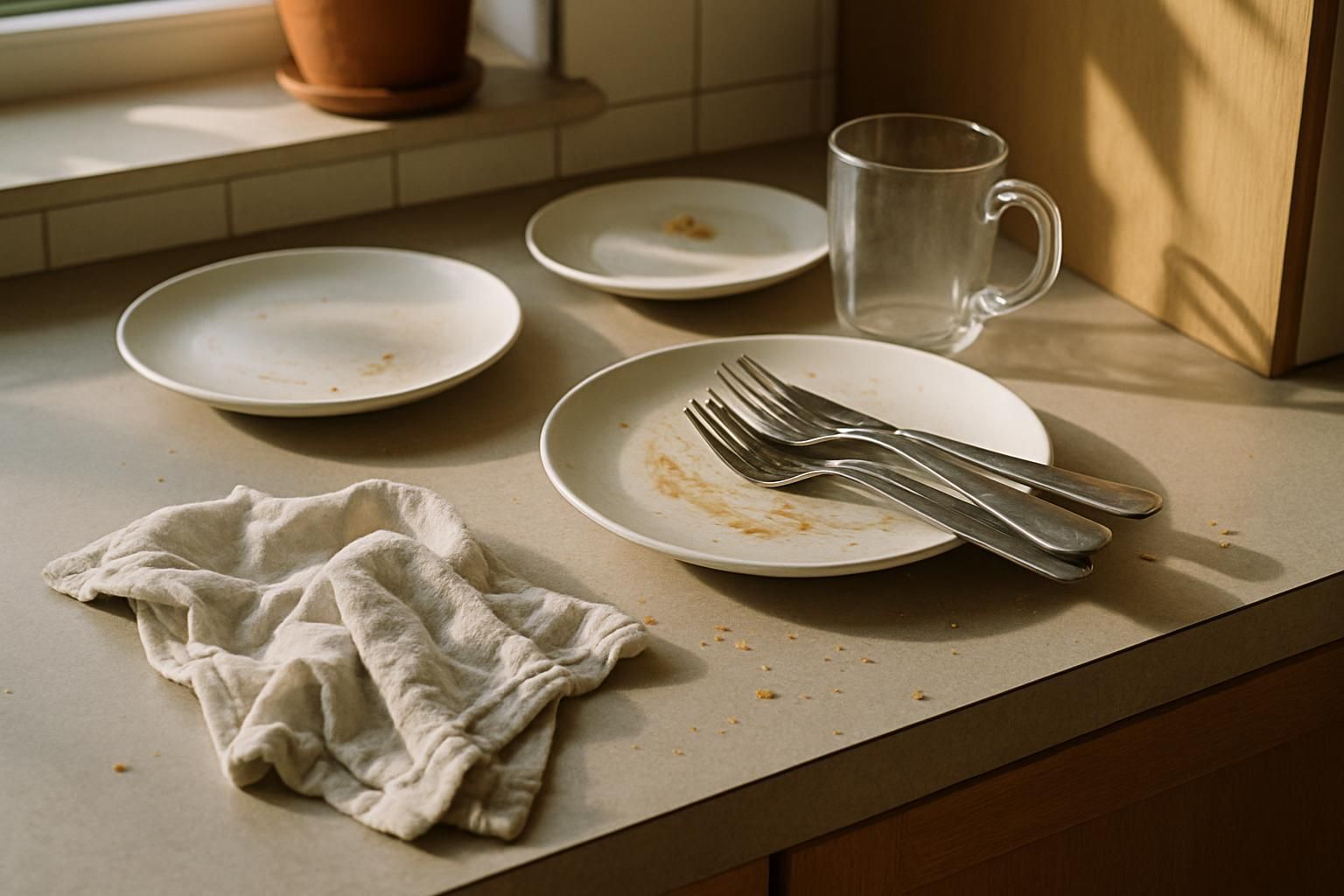
House owners should first look carefully around their homes to spot dirty or cluttered spots. High-traffic areas like kitchens, bathrooms, and living rooms need extra attention due to frequent use; surfaces here gather dirt quickly and germs spread faster.
Doorknobs, faucets, sinks, remote controls, washing machines, and shower caddies count as high-touch points that require regular disinfecting.
Parents can also take special note of difficult-to-clean spaces: corners behind furniture where dust gathers or carpets under tables where crumbs fall often. After identifying these spots, tackling cleaning tasks becomes simpler and more effective.
Set a schedule
A clear cleaning schedule helps homeowners and parents beat overwhelm. It lists chores by room, moving from top surfaces down to the floors for tasks like dusting shelves first and mopping last.
Personal lifestyle factors such as work hours or having young children determine how often each area needs attention; busy kitchens might require daily cleaning, while guest rooms stay fresh with weekly care.
Using tools like simple printed calendars or digital apps lets families assign dates to every task and keeps everyone accountable without confusion.
Gather necessary supplies
Gathering all needed supplies beforehand saves time and frustration. A portable caddy helps house owners keep cleaners, microfiber cloths, spraying bottles, scrub brushes, gloves, and sponges ready in one place.
Homeowners should check tools like vacuum attachments and mop heads to confirm they work well before cleaning starts. Having surface-specific cleaning solutions handy is also helpful; wood polish for furniture or mild detergents for tile floors make rooms sparkle without damage.
This keeps everyone organized with fewer trips back to the storage closet during cleaning tasks.
Declutter and Organize
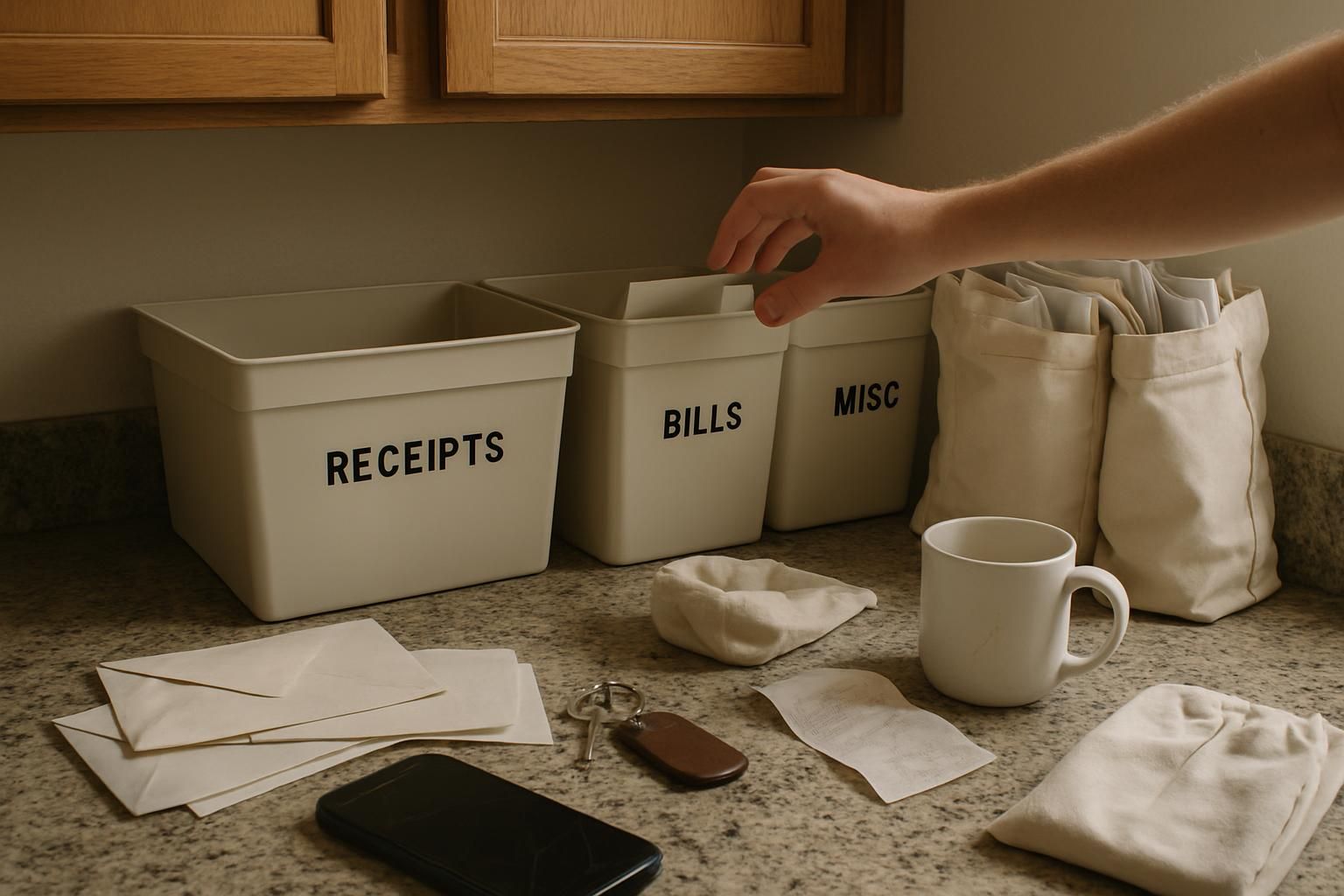
Clutter creeps in quietly, taking over closets and countertops when no one’s watching. Grab some bins and bags—a little sorting goes a long way toward beating the mess monster.
Tackle one area at a time
Cleaning the whole house at once might feel overwhelming. Focusing on one space, like a messy kitchen counter or cluttered bedroom closet, creates a clear sense of accomplishment and relief.
A good trick involves short daily resets that last less than 10 minutes; these quick tidy-ups keep rooms neat over time. Parents might first start with spots causing high stress levels, such as toy-filled playrooms or crowded entryways filled with shoes and backpacks.
Completing one section fully builds momentum to move onto dusting surfaces next.
Sort items into donate, keep, and trash piles
Sorting clutter into clear categories reduces stress. House owners can use labeled boxes or trash bags to keep items organized. A helpful method is the “one in, one out” rule: if someone buys a new item, an old one must go.
For parents, sorting toys or clothes becomes simple with three piles donate for charity donations, keep for daily items that earned their spot at home, and trash for broken or worn-out objects.
Starting small works well; choose just one drawer or closet shelf first to avoid overwhelm. The 30-day rule helps here too; discard things untouched during the past month without guilt or hesitation.
Dusting

Dusting off shelves and tables cuts household allergens down to size. It also keeps the sneezing under control, especially when visitors drop by unexpectedly.
Start from top to bottom
Cleaning begins at the ceiling and works downward. Starting with high points like shelves, ceiling fans, or hanging lights prevents dust from landing back on clean spots below. A microfiber cloth or long-handled duster makes reaching those higher areas easier.
After cleaning upper corners and surfaces, homeowners move to mid-level objects like tables and counters. This way any falling dirt gets cleaned up as they go lower; no repeated work needed! By the time floors are reached for vacuuming or mopping, most of the dust will already be under control.
Use microfiber cloths and dusting sprays
Working from the top makes dusting quicker and easier. Microfiber cloths trap dirt, pet hair, and grime without scattering particles into the air; they work dry for basic dust removal or damp against tougher spots.
Paired with vinegar spray, microfiber makes windows sparkle without streaks and removes water spots on glassware and other surfaces easily. Dust sprays used with microfiber lift stubborn dirt off wooden furniture quickly, leaving surfaces clean and dust-free with little effort.
Households, especially parents wiping messy fingerprints, benefit greatly from keeping a stash of these cloths handy in cleaning kits at home.
Surface Cleaning
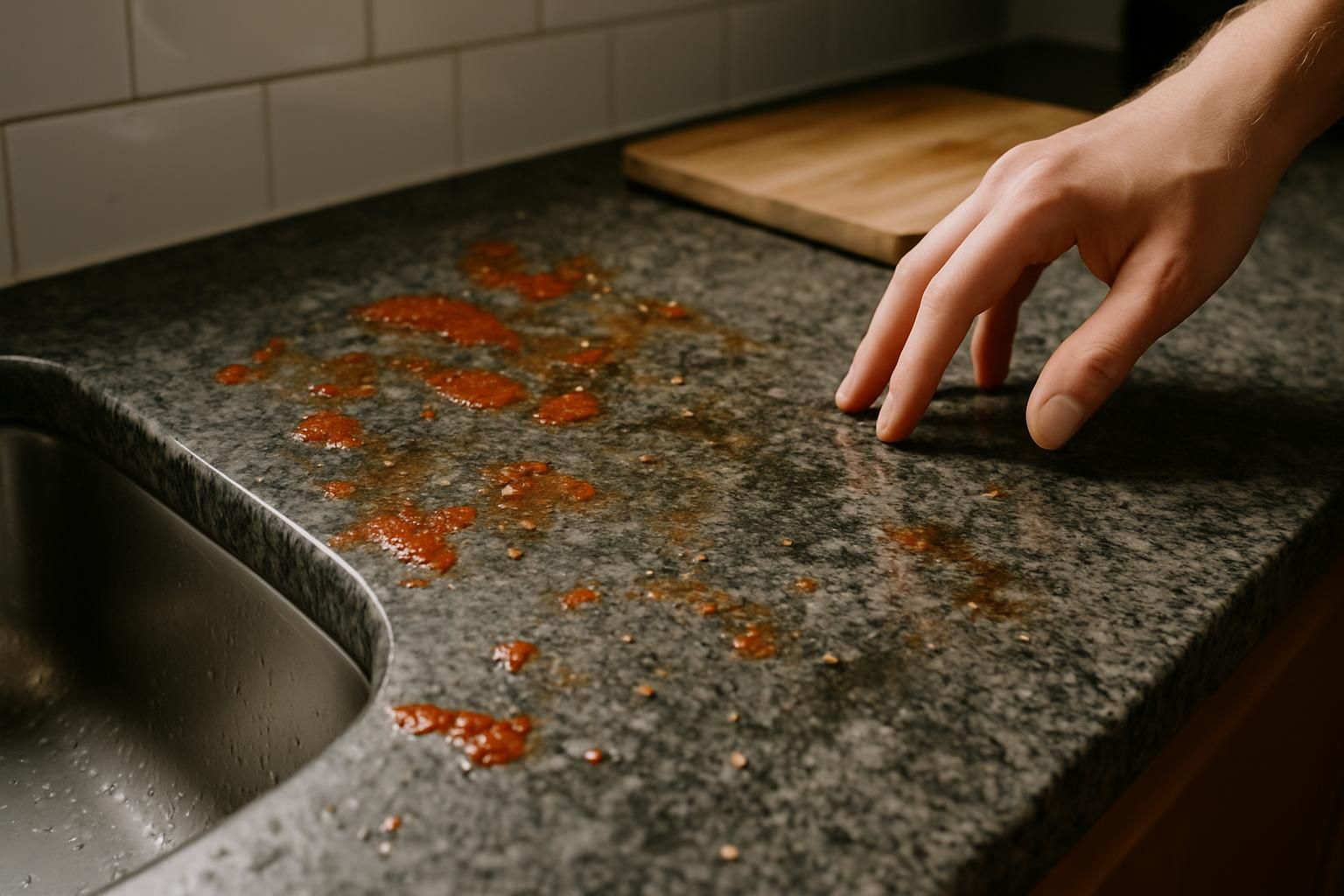
Surface cleaning tackles the grime and sticky spots that appear daily on counters and tables. With elbow grease, a good sponge, and the right sprays, surfaces will sparkle again quickly.
Use appropriate cleaners for different surfaces
Every surface in a home needs the right cleaner to kill germs and keep things clean. Wood surfaces, for instance, need mild soaps or special furniture polish sprays to prevent damage. Glass tables or mirrors call for glass cleaners because they leave no streaks behind. Kitchen counters made of granite require gentle stone cleaning products instead of harsher chemicals.
Bathrooms show best results with disinfectant sprays that eliminate bacteria effectively. Kitchens especially need thorough attention since food prep areas often attract harmful microorganisms like salmonella or E.coli; using proper disinfectants here prevents illnesses in families with kids at home.
First wiping away crumbs and spills is essential because visible dirt blocks disinfectants from working fully; once clear and dry, homeowners can apply antibacterial wipes or kitchen-specific sprays safely. Choosing suitable cleaners also helps limit cross-contamination between surfaces where different cleanliness levels are necessary.
Use a cleaning solution and scrub for stubborn stains
Selecting the right cleaning solution is important for tough stains like grease, soap scum, or dried food spills. House owners can make a paste from baking soda and water to tackle stuck-on grime.
Spraying vinegar mixed with dish soap works well on greasy kitchen counters and stove surfaces. Using gentle scrubbing tools like soft brushes, sponges, or scrub pads helps lift stubborn dirt without harming delicate finishes.
Proper prep work before applying any cleaner allows the solution to penetrate better into stains. Rinsing thoroughly afterward and drying surfaces fully prevents mold growth from leftover moisture behind sinks or showers. This process keeps bathrooms fresh-smelling and kitchens free of residue buildup.
Vacuuming and Mopping
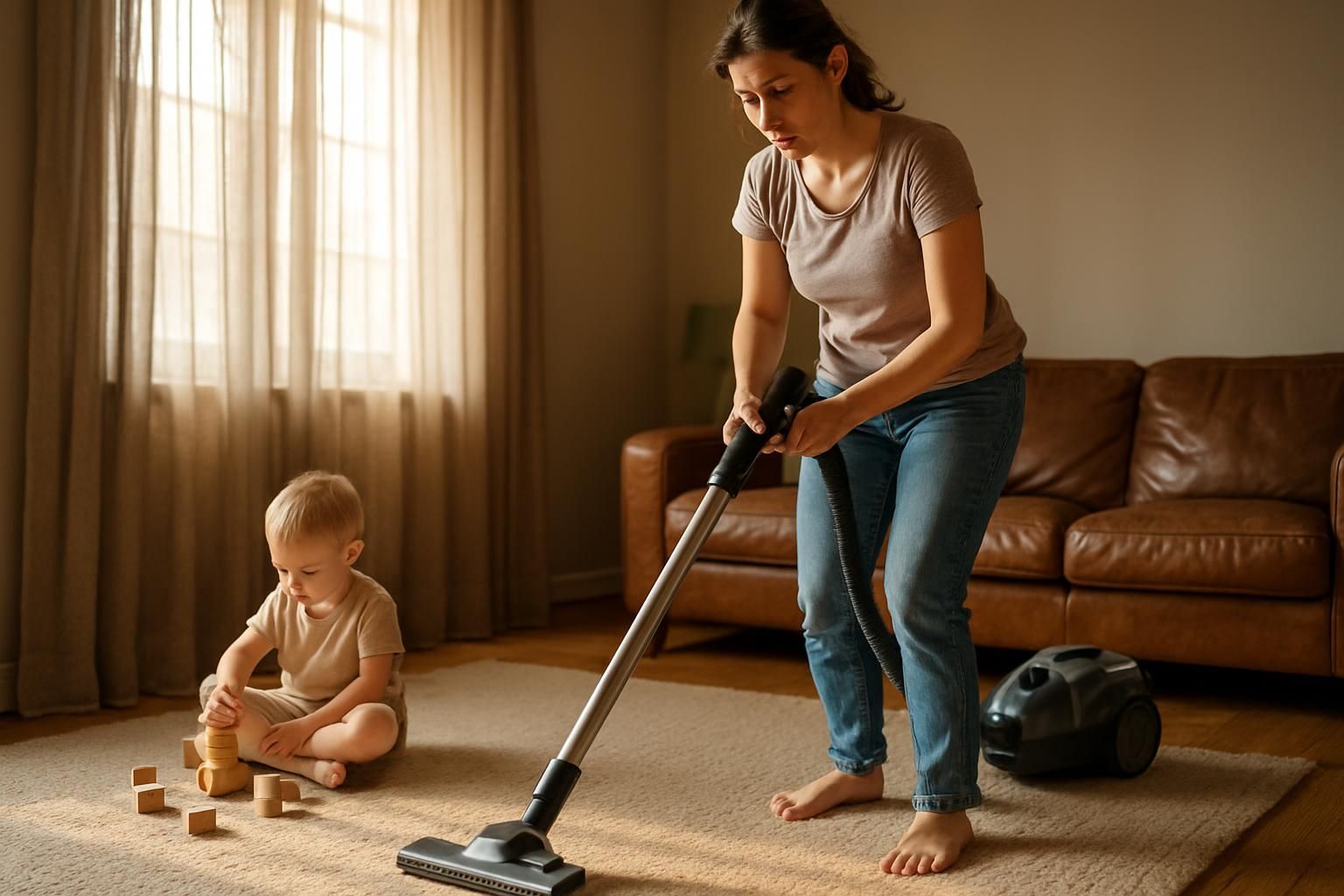
The vacuum cleaner hunts down crumbs like a hungry animal. A mop then swoops in, leaving floors sparkling clean and ready for tiny feet to run wild again.
Use vacuum attachments for hard-to-reach areas
Crevice tools clean tight spaces easily and help capture dust hiding behind furniture. Maintaining proper airflow in these attachments keeps suction power strong, making spring cleaning quicker for house owners.
Canister vacuums often have a special floor brush built for wood floors, capturing dirt gently without scratching them. A soft-bristle attachment also cleans delicate items like lampshades or window blinds safely. Using the right vacuum accessories saves time and effort when tackling tricky spots around the home.
Use a mild cleaner for mopping
House owners and parents should always pick a mild floor cleaner made for the specific type of flooring. Often, people grab harsh chemicals thinking they work better; severe cleaners can dull wood floors or damage tiles.
Mixing hot water with gentle detergent boosts cleaning power and wipes away dirt with ease. Finishing with a rinse from clean hot water removes leftover soap residue, preventing sticky floors later on. With proper care, floors dry evenly and retain their shine longer.
Let floors dry completely
After cleaning floors with a mild cleaner, drying time matters. Wet floors cause slips and falls, especially in homes with young kids. Moisture also invites mold and mildew if left damp for too long.
Families should mop at least once weekly and keep all foot traffic away from wet areas until fully dry. Opening windows or using fans can speed up drying for stubborn spots, protecting family safety and home health.
Disinfecting
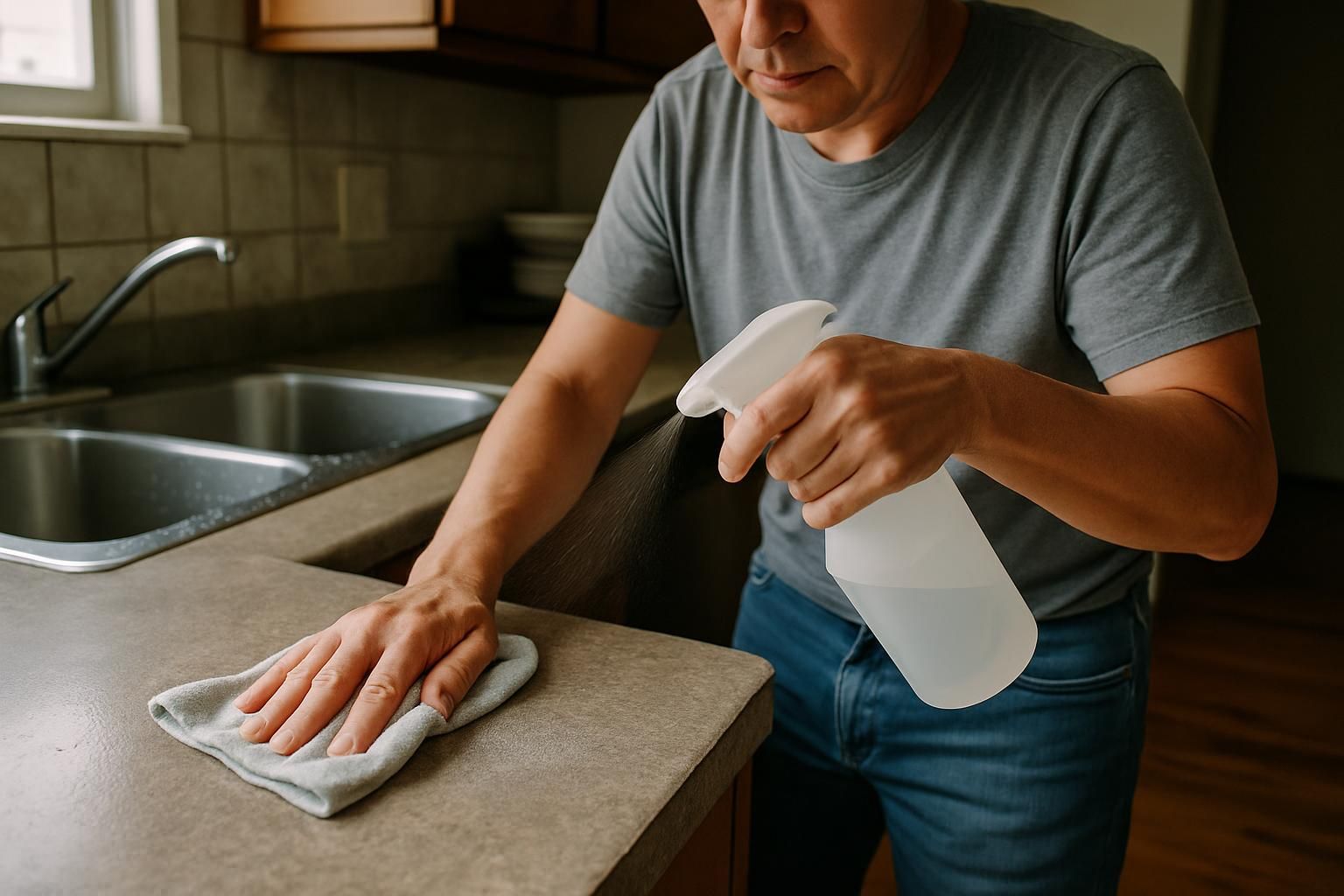
Grab a disinfectant spray or good old wipes to zap those sneaky germs, keeping your family safe read on for extra cleaning tips!
Use disinfectant wipes or sprays
Disinfectant wipes work quickly and can easily kill germs like viruses and bacteria on kitchen counters, doorknobs, or remote controls. RTU wipes often fight certain pathogens better than disinfectant sprays; diluted spray solutions require regular concentration testing to stay effective.
The Environmental Protection Agency advises house owners and parents to carefully follow instructions on product labels because proper application boosts germ-fighting power.
Sprays provide convenience for cleaning larger surfaces like tables or bathroom sinks when applied evenly. Staff who regularly clean with diluted products should test the strength often to maintain success against harmful pathogens.
Whether using Lysol sprays or Clorox disinfecting wipes, users must store these cleaners safely away from curious kids or pets.
Focus on commonly touched areas
Wipes or sprays on surfaces like doorknobs, faucets, and remote controls reduce the spread of germs. High-touch spots such as refrigerator handles, phones, keyboards, tabletops, bathroom sinks, chairs, and light switches carry many bacteria from daily use.
If someone at home is sick or has a weak immune system, cleaning these areas often with disinfectants as directed minimizes risk. Wearing gloves while scrubbing helps protect skin and limits contact with harsh chemicals. Focusing on frequently touched places saves time and brings peace of mind to the household.
Finishing Touches
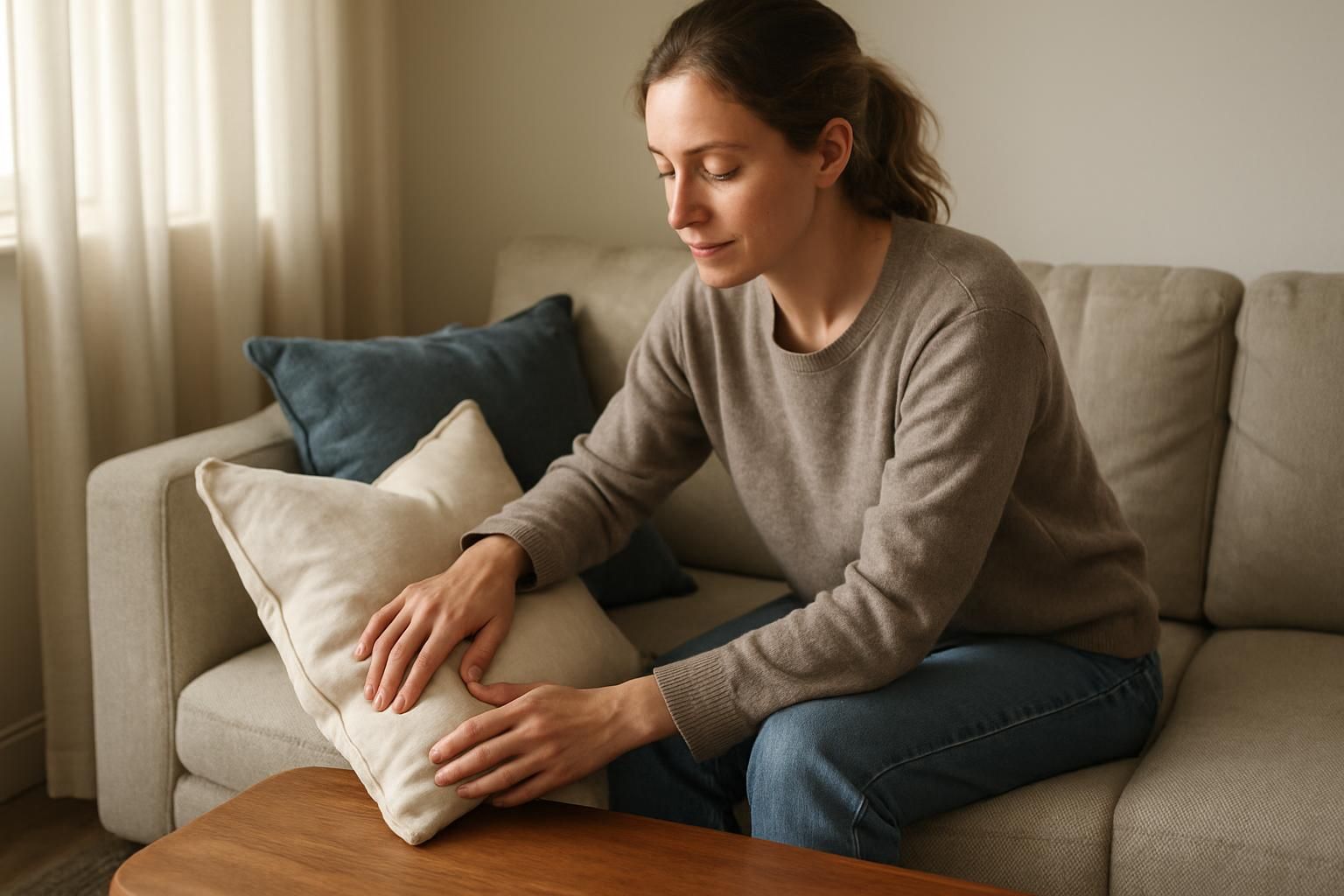
Wrap up the cleaning spree by fluffing throw pillows and giving furniture a quick straighten-up you’ll feel like a home-decor wizard—curious to discover more handy tips?
Replace trash bags and clean trash cans
Taking out full trash bags is important, but cleaning the cans matters too. Homeowners should wash indoor trash cans once a month to prevent odors and bacteria buildup. Baking soda absorbs odors, dryer sheets add freshness, and deodorizers help maintain a pleasant smell.
After washing with warm water and soap, letting trash bins air-dry outside prevents mold growth. Fresh bags placed in clean cans make homes healthier and kitchens more inviting. Parents who follow this simple habit protect their family from germs while keeping unpleasant smells away.
Fluff pillows and arrange furniture
With fresh trash bags in place and clean cans ready, the next step is fluffing pillows. Manual squeezing, kneading gently by hand, or lightly striking pillows against a bed revives their shape and comfort quickly.
Tumble-drying helps shift pillow filling effectively too, but use a low heat setting to prevent damage. Regular fluffing extends pillows’ lifespan and gives family rooms an inviting look. Furniture arrangement also matters; neatly placing sofas and chairs opens up spaces for relaxation or play.
Conclusion
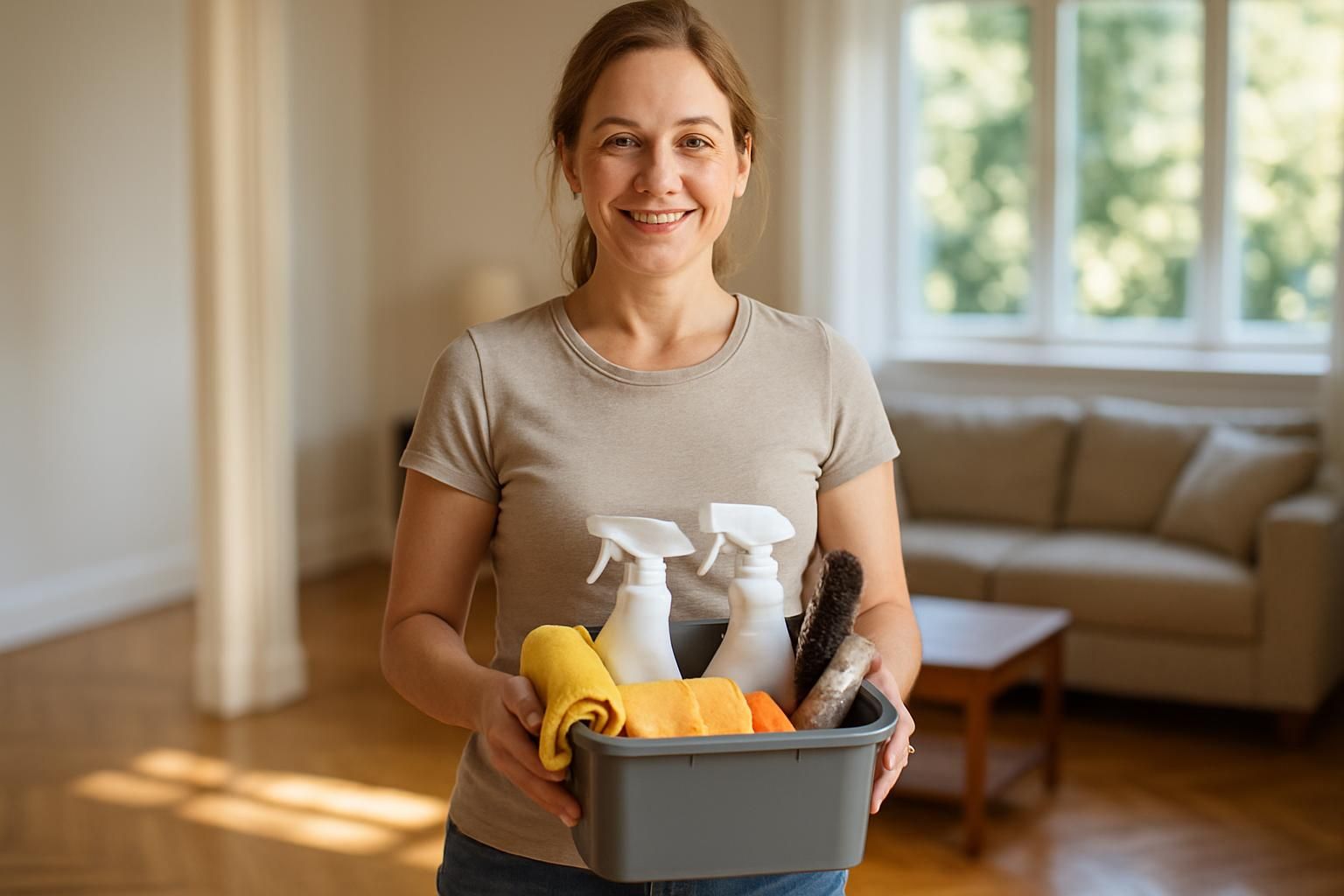
Cleaning becomes easier by starting with a simple plan and a handy caddy of supplies. Begin at the ceiling, cut clutter room by room, then scrub surfaces and finish floors last. Add disinfectants to key spaces like kitchen counters or doorknobs for extra germ-fighting power.
A solid cleaning schedule helps save energy, money, water and valuable weekend time. By following these seven smart steps, any homeowner can quickly tidy up without stress or hassle.
FAQs
1. What are the 7 easy steps to cleaning, and can anyone follow them?
Absolutely! The 7 easy steps include clearing clutter, dusting surfaces, wiping down areas, vacuuming floors, mopping hard floors, sanitizing high-touch spots, and finally airing out rooms. Even if you’re not a neat freak by nature, these simple actions make your home sparkle without stress.
2. How often should I perform these 7 cleaning steps in my house?
Ideally once a week keeps things fresh and tidy. But let’s be real; life happens sometimes. If weekly feels like climbing Everest barefoot for you right now, aim for every two weeks instead.
3. Do I need special products or equipment to complete the 7-step cleaning routine?
Not at all! Basic supplies like microfiber cloths, an effective cleaner spray or wipes for sanitizing surfaces will do wonders here. A reliable vacuum cleaner helps too; no need to break the bank on fancy gadgets.
4. Can following these easy cleaning steps save me time overall?
Definitely yes! Following clear routines means less guesswork later when tackling messes around your place becomes urgent business again, preventing chores from piling up into mountains waiting to be addressed.
Extra Cleaning Tips: Consider eco-friendly cleaning solutions by using natural ingredients such as vinegar, baking soda, and lemon. A digital cleaning schedule may simplify routines and reduce errors. Avoid common pitfalls by reviewing your supplies regularly and setting up simple, step-by-step methods.

